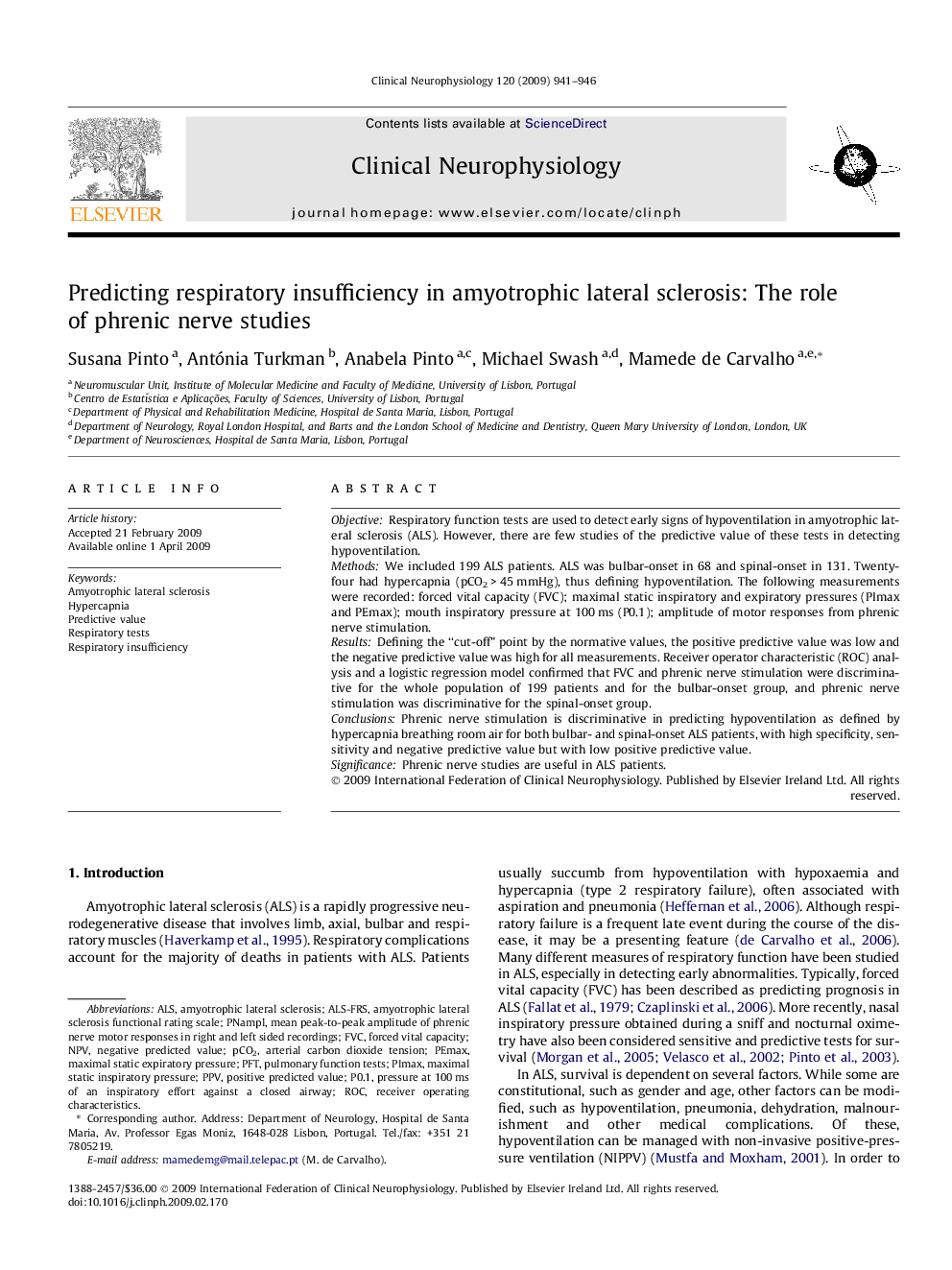| Article ID | Journal | Published Year | Pages | File Type |
|---|---|---|---|---|
| 3046051 | Clinical Neurophysiology | 2009 | 6 Pages |
ObjectiveRespiratory function tests are used to detect early signs of hypoventilation in amyotrophic lateral sclerosis (ALS). However, there are few studies of the predictive value of these tests in detecting hypoventilation.MethodsWe included 199 ALS patients. ALS was bulbar-onset in 68 and spinal-onset in 131. Twenty-four had hypercapnia (pCO2 > 45 mmHg), thus defining hypoventilation. The following measurements were recorded: forced vital capacity (FVC); maximal static inspiratory and expiratory pressures (PImax and PEmax); mouth inspiratory pressure at 100 ms (P0.1); amplitude of motor responses from phrenic nerve stimulation.ResultsDefining the “cut-off” point by the normative values, the positive predictive value was low and the negative predictive value was high for all measurements. Receiver operator characteristic (ROC) analysis and a logistic regression model confirmed that FVC and phrenic nerve stimulation were discriminative for the whole population of 199 patients and for the bulbar-onset group, and phrenic nerve stimulation was discriminative for the spinal-onset group.ConclusionsPhrenic nerve stimulation is discriminative in predicting hypoventilation as defined by hypercapnia breathing room air for both bulbar- and spinal-onset ALS patients, with high specificity, sensitivity and negative predictive value but with low positive predictive value.SignificancePhrenic nerve studies are useful in ALS patients.
